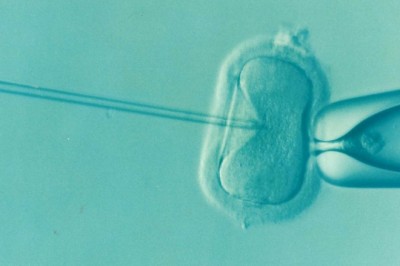Can Plastic and Copper Prevent Pregnancy?
The use of contraceptions, being a modern option for family planning (in addition to the more conservative abstinence and calendar method), has slowly been gaining popularity. Among these wide array of choices is the invasive but very manageable, Intra-Uterine Device or IUD.
An intra-uterine device is a special instrument that is fitted inside of the uterus. It comes in various forms, depending on what suits the client well. Some types contain levonorgestrel, a hormone that is continuously released into the uterus to combat conception. Another type of IUD has copper wire coiled around the stem and arms of the device. Both come with a length of one and a quarter inches (1 1/2"). Each IUD has a string attached to the end, so that the woman can check if the IUD is in place and so that it will be easier for the health care provider to remove it. The IUD is inserted into the uterus through the vagina and can protect against pregnancy.
The client may experience lower backache when the IUD is inserted, and it may persist for a few weeks after insertion. Often, these pains can be relieved by over-the-counter analgesics. In addition, since IUD is a bit invasive, clients are prone to Pelvic Inflammatory Diseases especially for the first six weeks after insertion.
The IUD is a good form of contraception if the client is not prone of acquiring sexually transmitted diseases. It is best recommended to multigravid and monogamous women.
The IUD should be inserted by a licensed health care provider and during a womans monthly period. It should be done after a thorough pelvic examination to determine the size, shape and position of the uterus and other reproductive organs. It is inserted through an opening in the cervix into the uterus using an intra-uterine instrument that guides the device flat until it is at the top of the uterus. This procedure can last up to 10 minutes. Once it has been inserted, it will stay in the uterus and one can resume normal sexual activities because the IUD starts protecting against pregnancy right after the health care provider inserts it.
After the IUD has been inserted, the client may feel strange cramping during her monthly period. When this happens, the string inside of the vagina should be checked. it is done by inserting a clean finger in the vagina all the way to the cervix. The IUDs string feels like a lightweight plastic thread or a fishing line. It should hang about 2 inches down from the cervix into the vagina. If the string cant be felt or if the IUD itself is the one that is felt during palapation, it is probably not in the right place. In cases like this, one should consult a health care provider to check on the device and to educate the client further.
An IUD prevents pregnancy by ceasing the sperm from reaching the egg. It does this by providing a somewhat detour route for the sperm. An IUD also changes the lining of the uterus so an egg does not implant in the lining if it has been fertilized. Therefore, the egg has no place to grow.
IUDs are the most effective form of nonpermanent birth control (99% effectivity rate). But contrary to the common belief, the IUD does not prevent the acquisiton of Sexually Transmitted Diseases (STD). It should only be used by women who are in a steady relationship with one partner. For women with multiple sex partners, they should use another method of birth control that protects against sexually transmitted diseases, such as condoms.
Other articles from the same author:
Absolute Guide to Chromosomal Analysis

























